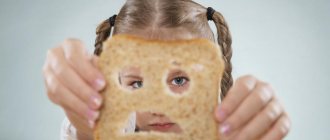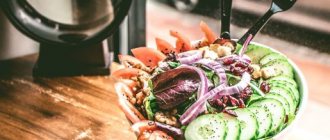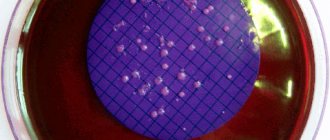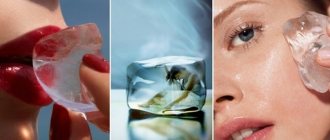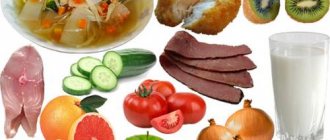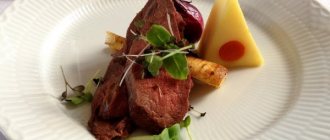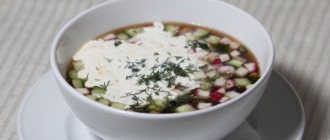The importance of following a diet for food allergies
To understand the relationship between nutrition and skin manifestations of an allergic reaction, it is necessary to understand the mechanism of sensitization. Allergy cannot be fully considered a disease. It is an atypical response of the immune system resulting from contact with a certain substance that normally should not cause sensitivity. Allergens can include food, plant pollen, animal waste products, household chemicals, even sunlight and water.
The skin is a kind of indicator reflecting the general condition of the body. If a person has an atypical immune response to a particular substance, it is the skin that first suffers from such sensitization. Symptoms of skin allergies include small and large rashes, accompanied by itching, burning and soreness, swelling and redness of the skin.
Eating certain foods can both provoke the onset of an allergic reaction and aggravate existing symptoms of sensitization. For this reason, during a period of exacerbation of allergies, it is advisable to completely exclude trigger foods from the diet and adhere to certain rules for processing and eating food. Following a diet for skin allergies, as well as following medical recommendations and taking prescribed medications is a real opportunity to cope with the unpleasant manifestations of sensitization and strengthen the body's defenses.
Principles of nutrition for Quincke's edema
Best materials of the month
- Coronaviruses: SARS-CoV-2 (COVID-19)
- Antibiotics for the prevention and treatment of COVID-19: how effective are they?
- The most common "office" diseases
- Does vodka kill coronavirus?
- How to stay alive on our roads?
Quincke's edema is the most complex of allergic dermatoses. Its danger is that the disease can lead to swelling of the brain and respiratory tract. If you don’t follow a diet and consume prohibited foods, in this state the “results” will manifest themselves faster. In cases of poor diet, some patients significantly aggravated their own condition.
The diet prescribed to a patient with angioedema completely excludes allergenic foods that were named in the list of unacceptable ones above, but with several amendments.
It is still better to exclude high-carbohydrate cereals and leave only millet and oatmeal. Salt and sugar are removed from the diet completely (salt retains water, and sugar can provoke exacerbations of allergies). You can only drink herbal decoction, green tea without sugar and water (even kefir is excluded - lactose can provoke re-edema). For the same reason, you should not consume high-fat dairy products.
During the acute period, the following is allowed: lean meat; cereal porridge; cabbage of various types; green vegetables; yellow, white and green fruits; sugar-free juices and green tea.
If a specific allergen is detected, it should be excluded. This applies not only to the period of the diet, which in case of Quincke's edema must be followed for a month, but also to further nutrition. If, for example, an allergy to honey is detected, you should not eat it in the future - otherwise various immunological reactions will occur: from urticaria to angioedema itself.
You also need to gradually exit the diet for Quincke's edema: new foods are included in the diet in small quantities and consumed within the limits permitted by the doctor.
Main features of the diet for skin allergies in adults and children
A specialist should be involved in preparing a balanced diet that excludes the consumption of trigger foods. Based on laboratory tests and specialized tests, an allergist (or dermatologist) will be able to determine not only the allergen that provokes sensitization, but also substances that are similar in structure and can also cause unpleasant symptoms. Only a doctor can make a list of permitted and prohibited products, taking into account the individual characteristics of the patient - such as the intensity of the atypical reaction, age, gender, general health and the presence of concomitant diseases.
If at the moment you do not have the opportunity to visit a doctor, you can use some general recommendations regarding the preparation of a diet for skin allergies in adults and children:
- Meals should be fractional. If you eat food in small portions 5-6 times a day instead of the usual 3 (breakfast, lunch and dinner), its digestion will occur faster and better. As a result, the load on the gastrointestinal tract will be reduced.
- It is important to cook food properly. Instead of frying foods (especially deep-frying), it is advisable to give preference to stewing, boiling, steaming, and baking in an oven. It is also necessary to consume permitted vegetables and fruits in raw, fresh form.
- The diet for skin allergies in children and adults should be balanced. Despite the fact that protein is usually the culprit for an atypical reaction in the body, it is not advisable to completely exclude it from the diet. Also, do not forget about saturating the body with vitamins and minerals. If some beneficial substances enter the body with food in insufficient quantities, you can discuss with your doctor the advisability of taking vitamin-mineral complexes.
- When drawing up a dietary menu for skin allergies, you need to take into account the possibility of a cross-reaction. Some substances have similar amino acid structures, causing the immune system to mistakenly react to them in the same way as to an allergenic substance. In this case, a cross-reaction can extend not only to food, but also to other groups of allergens (household, pollen, medications, etc.) To exclude the possibility of cross-reactions, when creating a menu, it is recommended to familiarize yourself with the tables that provide a list of substances that have similar structure. For example, a diet for allergies to cereal grasses and pollen involves avoiding baked goods, wheat and malt beer, bread kvass, chicory, sunflower oil and seeds.
- To reduce the intensity of the allergic reaction, it is advisable to avoid the consumption of alcohol and refined sugar.
- To assess the safety of food products for skin allergies, it is recommended to keep a food diary. It should include the following columns: date and time of food intake, name, composition, quantity and method of preparation of the food eaten, description of the skin reaction. It is advisable to keep entries in the diary on an ongoing basis for 1-2 months, after which you need to analyze the body’s reaction to certain foods. It is also recommended to make appropriate notes after introducing new dishes into the diet.
Diet principles
When a diet for urticaria in adults is recommended to a patient, he is expected to follow these general rules:
- Keep a food diary responsibly. This means entering into it all the foods eaten during the day, their quantity and how the body reacted to them.
- Considering the list of permitted products, create a varied, balanced menu.
- Avoid fast food and processed foods. Eat mainly what is prepared at home.
- Adhere to the correct drinking regime. During the day, drink at least 1.5-2 liters of purified water without gases.
- Avoid overeating. Meals should be small, but frequent. It is optimal to eat 4-5 times a day at regular intervals.
- The priority cooking methods should be: stewing, baking, steaming. Fried, smoked and pickled foods should be avoided.
There are 2 types of diets: elimination (exclusion of a causally significant allergen) and basic (nonspecific). This is due to the fact that a reaction in the form of urticaria can be caused not only by food allergies, but also by its other forms: cold, dermographic, aquagenic, cholinergic. And in some cases, it is not possible to identify the cause of urticaria.
During an exacerbation, regardless of the type and genesis of urticaria, you should follow a diet. Even if dietary nutrition does not eliminate the primary allergen, it helps to improve the patient’s condition, protects against severe anaphylactic conditions and promotes rapid recovery.
Types of nutrition for allergies: which diet is relevant in a particular case?
If a person is sensitized to a specific allergen or group of them, his diet may be:
- Eliminative. The elimination diet menu for skin allergies is designed so that it does not contain the allergen substance. At the same time, other moderately and even highly allergenic products can be allowed for consumption in reasonable quantities. For example, if a patient has an increased sensitivity to plant protein (gluten), the allergy diet excludes the consumption of cereals and soups made from wheat, rye, barley and oatmeal, as well as dishes made from these types of flour. Instead, it is recommended to include special gluten-free varieties of bread, legumes, nuts, meat, fish and eggs in the diet. As a result, the lack of protein caused by avoiding gluten is compensated by obtaining it from approved foods.
- Basic. Basic nutrition involves eating hypoallergenic foods and completely avoiding all potential allergens. It is especially relevant if the product that provokes an atypical reaction of the body is unknown. In most cases, it is recommended to adhere to such a diet during periods of acute allergies, as well as in the presence of polyvalent allergies.
Diet for allergies: what can and cannot be eaten?
All products are divided into three categories:
- Highly allergenic. This group includes products that most often cause an atypical reaction. These include both animal and plant foods: cow's milk and products made from it, chicken, eggs, seafood (especially crustaceans), fish; sunflowers, nuts, wheat, red and orange fruits and vegetables, citrus fruits, mushrooms. In addition to these products, an increased risk of developing or intensifying allergies is observed when consuming smoked, salted and pickled foods, fast food, trans fats, alcohol, artificial emulsifiers, preservatives and flavorings.
- Moderately allergenic. This group includes lean pork, legumes, bananas, buckwheat, peaches and plums, and corn.
- Low allergenic. An anti-allergy diet may include such safe foods as zucchini, white currants, fresh cucumbers, greens, turnips, cabbage, lean lamb, horse meat, and rabbit.
What can't you eat?
When following a hypoallergenic diet for urticaria, it is necessary to exclude the following foods from the diet:
- fresh vegetables, fruits and berries, painted in bright colors (bell peppers, tomatoes, citrus fruits, strawberries, pomegranate, watermelon);
- honey, cocoa, chocolate, confectionery;
- marinades, spices;
- fatty, fried foods;
- whole milk and sour cream in their pure form (can be used for cooking);
- fish and caviar;
- semi-finished products, sausages, canned food;
- eggs, mushrooms;
- nuts, seeds;
- sweet carbonated drinks, coffee, alcohol.
If urticaria is provoked by a thermal factor (too high or too low temperatures), then it is necessary to exclude (minimize) the use of salt.
Diet for allergies in adults: menu for 4 days
Creating a balanced daily diet depends on which product is likely to cause an atypical reaction in you. Below is an example of a basic skin allergy diet that excludes several common allergens.
The first day
Breakfast: buckwheat porridge with water, cabbage and greens salad with olive oil dressing.
Second breakfast: potato pancakes.
Lunch: vegetable soup, stewed cabbage with boiled beef.
Afternoon snack: cottage cheese with herbs and cucumbers.
Dinner: zucchini stew, steamed lean pork cutlets.
Second day
Breakfast: oatmeal with water and dried fruits.
Second breakfast: biscuits.
Lunch: vegetarian borscht, pilaf with lean lamb.
Afternoon snack: yogurt without additives.
Dinner: apples of approved varieties (Simirenko, White filling, etc.), baked with cottage cheese.
Day three
Breakfast: millet porridge with allowed fresh vegetables, biscuits.
Second breakfast: zucchini pancakes.
Lunch: pea soup with vegetable broth, potato casserole with stewed rabbit.
Afternoon snack: kefir.
Dinner: boiled wild rice with boiled beef tongue.
Day four
Breakfast: oatmeal with dried fruits, green tea.
Second breakfast: banana.
Lunch: rice soup with vegetable broth, steamed rabbit meatballs.
Afternoon snack: compote of permitted fruits.
Dinner: buckwheat porridge with water, cabbage and cucumber salad.
Products allowed for urticaria
If you adhere to the principles of a hypoallergenic diet, half of the symptoms disappear within the first two days. This is especially important for children prone to allergies. The list of permitted products includes the following: vegetables that are not included in the list of inadmissible products for allergies; greens and cucumbers; buckwheat and rice on water; bran bread; not red apples, bananas; leaf salad; boiled beef and veal; croutons without seasoning.
Maintaining such a diet is quite difficult, but it is necessary, otherwise allergies will arise again. It is best to follow the diet for 2 weeks to a month and then quit it.
Diet for allergies in children
Allergic reactions in children are quite common. For some children, the tendency towards them is inherited. It is believed that if one of the parents is sensitized to any allergen, the likelihood of an atypical reaction in the child is 50%. If increased sensitivity is observed in both parents, this risk increases to 60-70%.
In childhood, sensitization to cow's milk protein is quite common. If the child is bottle-fed, the likelihood of developing such sensitization increases. In this case, the issue of following a diet for milk allergies becomes relevant. For babies under one year old, regular milk formulas can be replaced with formulas containing hydrolyzed cow's milk proteins. The introduction of complementary foods (hypoallergenic vegetable, fruit, berry and meat purees) to children with allergies should be carried out gradually.
Nutrition for skin allergies in children after one year has the same features as in adults. The only difference is that it is more difficult for children of preschool and school age to comply with restrictions and especially refuse sweets. To eliminate the risk of accidental consumption of prohibited foods (for example, in a kindergarten or school cafeteria), you can prepare children’s lunches at home and give them with them.
Principles of nutrition for urticaria in children
Baby nutrition for acute urticaria is a matter of particular importance, since young children tolerate any illness worse than adults, and their symptoms manifest themselves much more acutely and quickly. If urticaria occurs in a child whose age does not exceed one and a half years, it is worth transferring him to formula milk or breastfeeding, canceling any attempts to introduce complementary foods until final recovery.
If an allergy occurs after the introduction of complementary foods, it is worth switching the child back to baby food, namely purees and mixtures, and then be sure to show it to a doctor. Urticaria tends to worsen at the most unexpected moment, and untimely treatment significantly contributes to its complex course.
If the child is over one and a half years old, it is worth following a hypoallergenic diet for urticaria and carefully monitoring what foods the child eats in kindergarten or school. It is also worth taking into account the nutritional supplements that the child took before hives (they should be completely excluded before medical consultation).
The hypoallergenic diet of a child is no different from the diet for an adult. One note - adults should limit, and best of all, completely eliminate all alcohol from the diet, because it creates a strong burden on the body and may contain dyes.
It is acceptable for an adult to engage in therapeutic fasting: if there are no problems with the gastrointestinal tract, then fasting will help you return to normal faster.
Diet of a nursing mother for allergies in a child
Breastfeeding is one of the necessary conditions for the development of the baby’s immunity. Together with mother's milk, the baby receives the necessary nutrients - immunoglobulins, vitamins, minerals, enzymes.
If an allergic child is breastfed, responsibility for following the diet falls on the mother's shoulders. As long as a woman breastfeeds her baby, she should avoid consuming highly and moderately allergenic foods and drinks. It is advisable to observe these restrictions for at least six months - during this period the baby’s immune system is especially vulnerable. Starting at six months of age, hypoallergenic complementary foods can be gradually introduced. In this case, it is necessary to keep notes in a food diary, noting in it the child’s reaction to this or that type of complementary feeding.
Diet for urticaria: benefits
There are a large number of allergens in the world that provoke the development of urticaria. This disease can be caused by allergies to cosmetics, perfumes, food and medications.
It requires comprehensive intake of antiallergic medications, elimination of allergens, and special nutrition. After all, up to 55% of cases of urticaria are associated with an incorrect reaction of the body to a particular product.
Therefore, during treatment, the doctor prescribes a diet not only for preventive purposes, but also for diagnostic purposes. After all, after the product that causes the allergy is eliminated, the hives go away.
Which doctor will diagnose and prescribe the right diet?
If you notice skin rashes characteristic of urticaria, you should consult a dermatologist and allergist. A dermatologist will determine the origin of the rash, as many other skin conditions cause a rash similar to hives.
Having identified this disease, a specialist in skin diseases refers the patient to an allergist. Then the patient undergoes special tests (allergy tests) to identify the allergen that provokes the disease.
And only after this the doctor prescribes a special diet or sends the person to a nutritionist. Since urticaria can be caused by several types of allergens, it is worth excluding foods that can provoke the disease.
It is also important to listen to your body while dieting.
After stopping the use of a certain product, rashes may go away almost immediately, and if you resume using the allergen, they may appear again after a couple of hours.
Therefore, during the diet, you need to keep a special food diary in which you write down what you consumed per day. If the rashes go away or become less noticeable after stopping a particular product, it means that it was the product that provoked the hives.
What not to eat
If your doctor has diagnosed you with urticaria, then the menu should be based on the following recommendations. What needs to be limited or completely excluded from the menu:
- Meat, spices, sauces.
During urticaria, you should completely avoid meat and fish broths, various goulash with spices, hot sauces and seasonings. Most often, they can provoke allergies, including hives. You should not eat canned food or processed foods. - Red berries and fruits. Some red foods should absolutely not be eaten during hives: raspberries, strawberries, tomatoes, all types of red peppers, watermelons, pomegranates.
- Citrus. They can become strong allergens and cause rashes. Therefore, during the diet you need to exclude oranges, tangerines, lemons, grapefruits and other types of citrus products.
- It is highly undesirable to eat melon, sunflower seeds, and all types of nuts.
- Smoked meats, marinades, canned food. They should not be completely excluded during the diet, but remember that an abundance of spices can provoke hives.
- Fish and caviar. Many people are allergic to it;
- Carbonated and alcoholic drinks.
- Coffee, cocoa and chocolate. They can become strong allergy triggers.
- Chicken meat. It can also provoke the development of hives and skin rashes.
What can you eat without restrictions?
The following products can be consumed without restrictions during an exacerbation of urticaria:
- milk and dairy dietary products (with the exception of yogurt with additives, for example, raspberries, strawberries);
- porridge, except semolina;
- all types of cabbage;
- green and yellow apples;
- blueberry;
- cherries;
- white and black currants;
- cucumbers;
- potato;
- zucchini and pumpkin;
- green bean;
- gooseberry;
- dill and parsley;
- rabbit meat;
- shrimps;
- beef;
- low-fat cottage cheese;
- low-fat cheese;
- bread;
- refined and butter.
All of the above products can be consumed in various combinations. You can use them to create a daily menu that will help not only get rid of the appearance of hives, but also even lose a few extra pounds.
Important! During urticaria, you don’t have to give up some prohibited foods if you know for sure that they do not provoke the development of the disease. But they should be consumed in moderation.
And, of course, during treatment you need to completely exclude alcohol, confectionery, instant foods and coffee.
La-Cri products and their help in treating allergies
In addition to diet and taking antihistamines, the use of La-Cri cream for sensitive skin helps reduce the manifestations of an allergic reaction on the skin. The product contains active ingredients such as string, walnut and violet extracts, panthenol, bisabolol and avocado oil. The use of the cream helps reduce itching, redness and flaking of the skin - symptoms characteristic of allergies. The composition of the cream is absolutely safe, it does not contain hormones and parabens, so it can be used by pregnant women and children from birth.
Clinical researches
The conducted clinical study proves the high efficiency, safety and tolerability of products for daily skin care of children and adults with mild and moderate forms of atopic dermatitis and during remission, accompanied by a decrease in the quality of life of patients. As a result of therapy, a decrease in the activity of the inflammatory process, a decrease in dryness, itching and flaking was noted.
Clinical research has confirmed the following properties of La-Cri cream for sensitive skin:
- Removing redness;
- Skin moisturizing;
- Gentle skin care.
Based on the results of joint research, the following information is placed on product packaging: “Recommended by the St. Petersburg branch of the Union of Pediatricians of Russia.”
Sources:
- B.A. Shamov, I.G. Safiullina, A.B. Beshimova, T.B. Shamov, Differential diagnosis of atopic dermatitis, Journal of Practical Medicine, 2011
- Fokina R.A., Atopic dermatitis: stages of development of classification forms, Siberian Medical Journal, 2007
- Schneiderman Paul, Grossman Mark, Differential diagnosis in dermatology. Atlas, Publishing house: Binom, 2017
- Reken Martin, Schaller Martin, Sattler Elke, Burgdorf Walter, Atlas of Dermatology, MEDpress-inform publishing house, 2018
